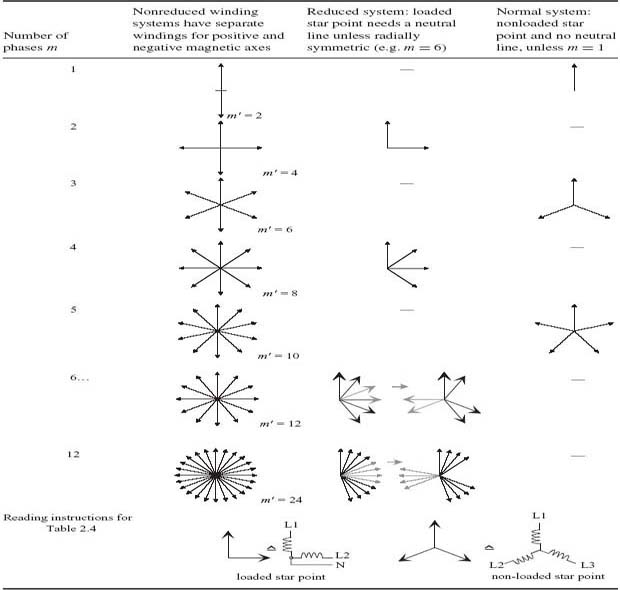2.9 Phase Systems and Zones of Windings
2.9.1 Phase Systems
Generally speaking, windings may involve single or multiple phases, the most common case being a three-phase winding, which has been discussed here also. However, various other winding constructions are possible, as illustrated in Table 2.4.
Table 2.4 Phase systems of the windings of electrical machines. The fourth column introduces radially symmetric winding alternatives.

On a single magnetic axis of an electrical machine, only one axis of a single-phase winding may be located. If another phase winding is placed on the same axis, no genuine poly-phase system is created, because both windings produce parallel fluxes. Therefore, each phase system that involves an even number of phases is reduced to involving only half of the original number of phases m′ as illustrated in Table 2.4. If the reduction produces a system with an odd number of phases, we obtain a radially symmetric poly-phase system, also known as a normal system.
If the reduction produces a system with an even number of phases, the result is called a reduced system. In this sense, an ordinary four-phase system is reduced to a two-phase system, as illustrated in Table 2.4. For an m-phase normal system, the phase angle is
(2.68) ![]()
Correspondingly, for a reduced system, ...
Get Design of Rotating Electrical Machines, 2nd Edition now with the O’Reilly learning platform.
O’Reilly members experience books, live events, courses curated by job role, and more from O’Reilly and nearly 200 top publishers.

